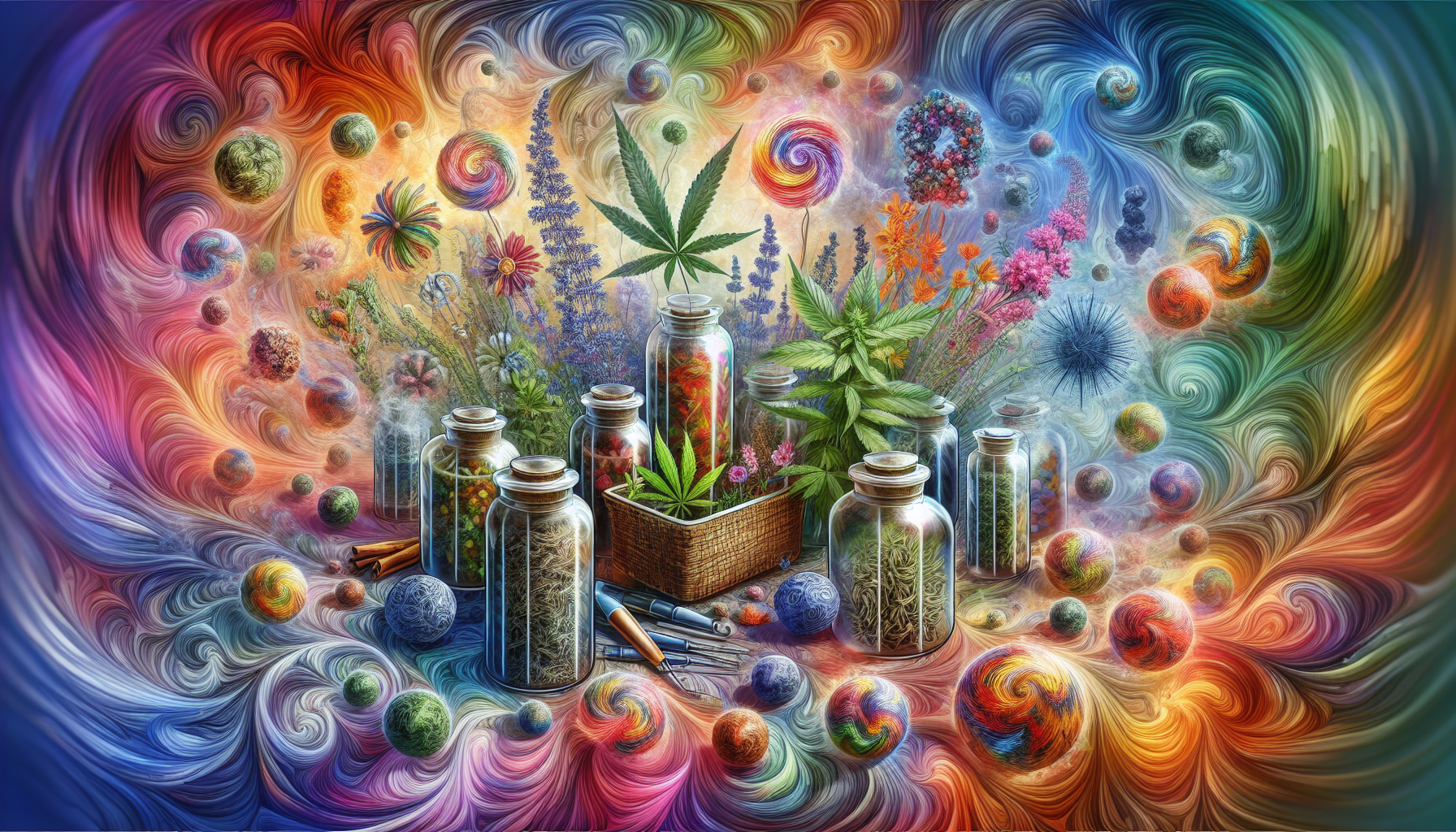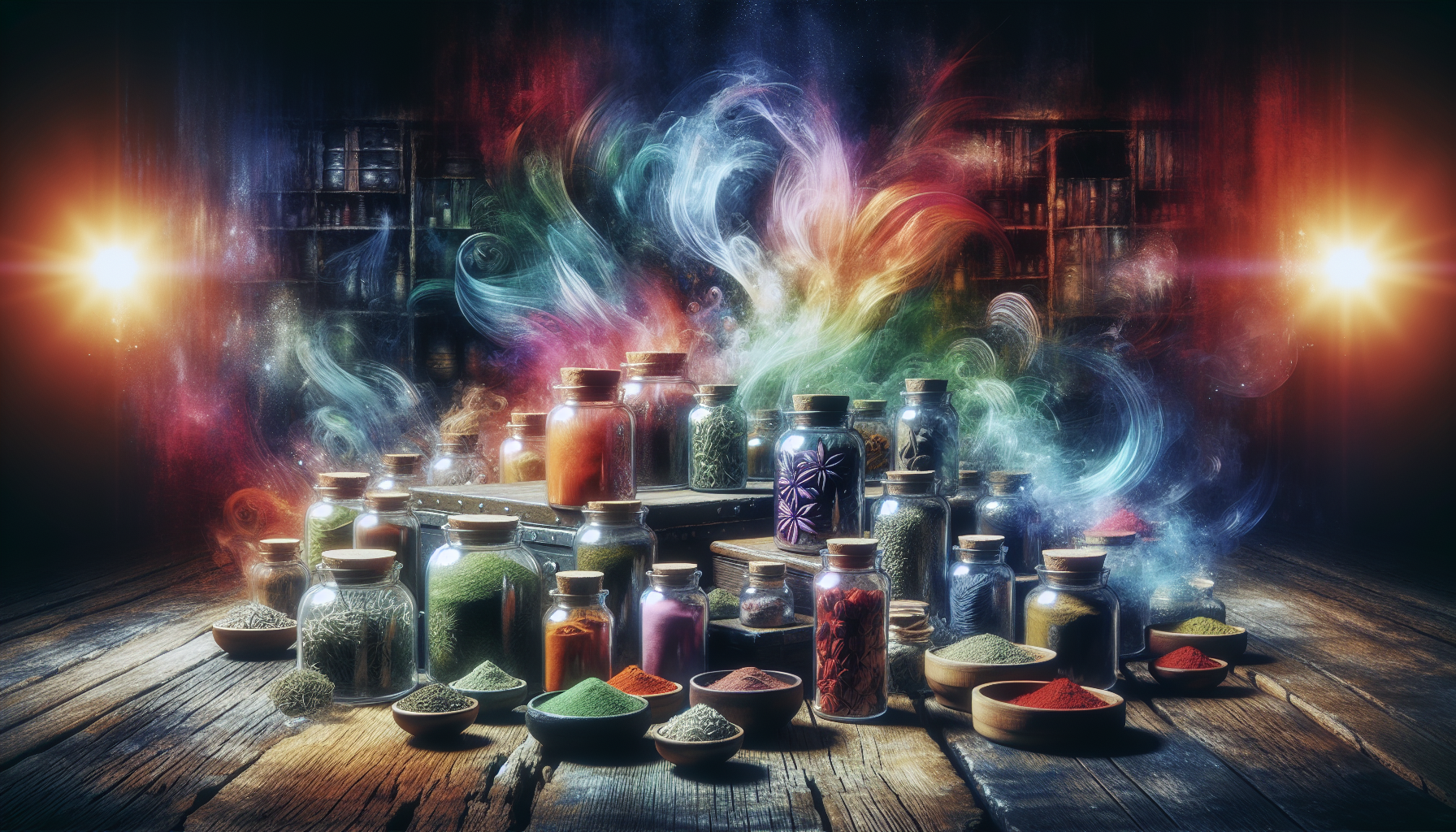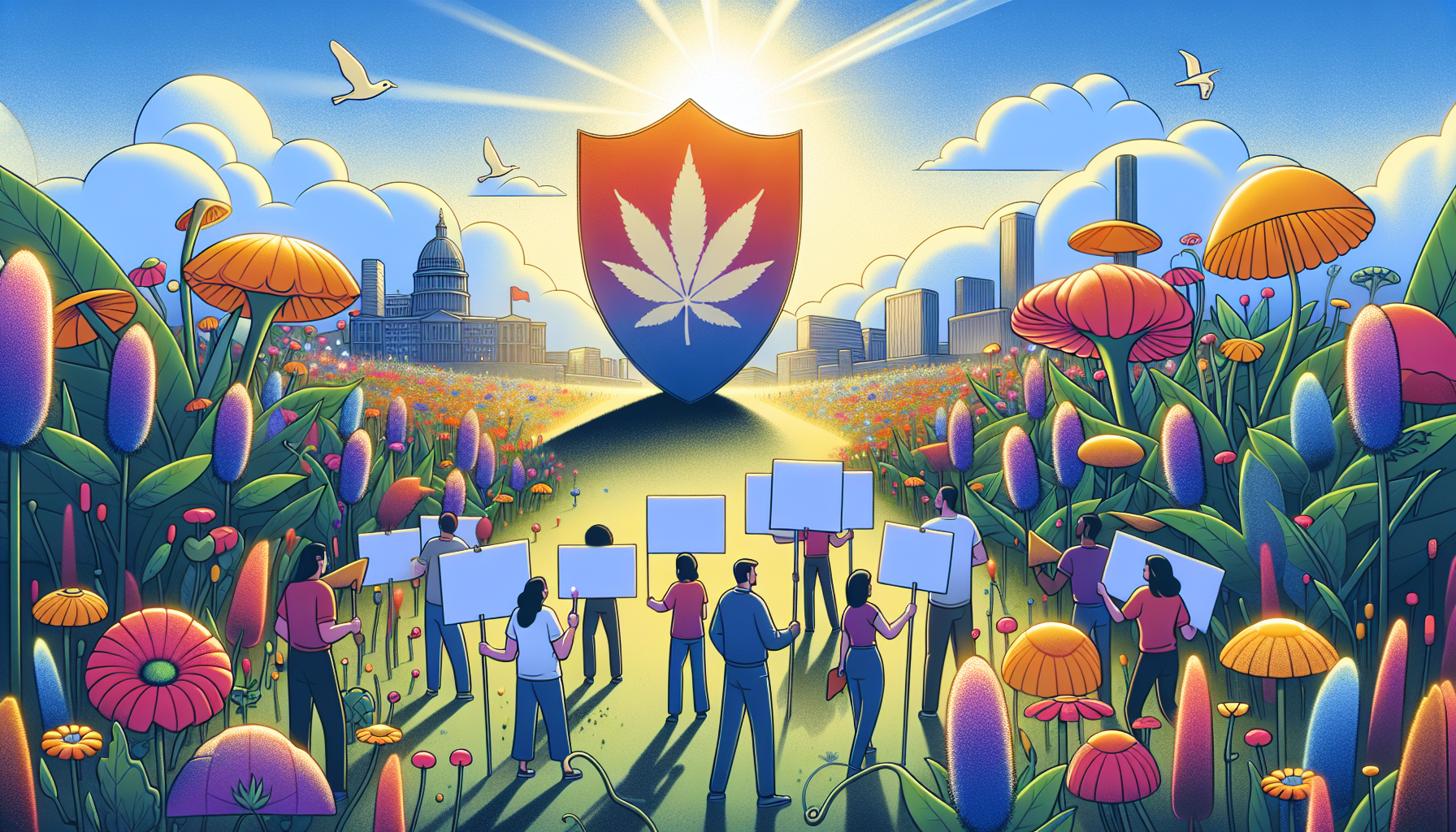Spice Nightmare: The Underestimated Danger of Synthetic Cannabinoids
Spice is a dangerous blend of synthetic cannabinoids that has been marketed as a legal alternative to cannabis. These substances can have far more potent and unpredictable effects than natural THC. What began as an experiment has quickly become a health hazard that has been banned in many countries. Below, you'll learn how Spice came to be, what its effects are, and what risks it poses, particularly by binding cannabinoid receptor agonists to the cannabinoid receptors in the brain.
The most important things at a glance
-
Spice is a dangerous blend of synthetic cannabinoids that produce stronger and more unpredictable effects than natural cannabis.
-
The illegal market for Spice has grown, leading to a rise in organized crime and violent clashes.
-
Education and prevention programs are crucial to inform the public about the risks of Spice and to offer help to those affected.
The Creation of Spice

Spice first appeared on the German-speaking Internet and in head shops in 2004. It was advertised as a legal alternative to cannabis and quickly found favor with consumers looking for a legal intoxicant.
In 2007, the manufacturer reduced prices, which led to an increase in popularity in online shops. This price reduction made Spice accessible to a wider audience and contributed to its rapid spread. Soon, Spice was easily available in many countries and was sold under various names such as "Spice Gold", "Spice Silver" and "gold spice".
However, the first chemical analysis of Spice revealed that none of the herbs listed were found in the samples. Instead, the mixtures contained synthetic cannabinoids that were responsible for the psychoactive effects. This discovery was the beginning of a long and complex investigation into this dangerous substance.
What is Spice?
Spice spice is a product that mainly contains synthetic cannabinoids, which are responsible for the psychoactive effects. These synthetic cannabinoids are designed to mimic the natural THC of the cannabis plant, but are often much more potent.
The main components of Spice, such as CP-47,497, are similar in structure to natural THC, while JWH-018 may also be present in certain samples. These compounds bind to the same receptors in the brain as THC, but cause stronger and more unpredictable effects.
In addition to the synthetic cannabinoids, the herbal blends may contain various herbal ingredients such as sea bean and blue lotus flower. However, the exact amount of these herbs is often not specified, making the risks and effects difficult to predict.
The Effect of Spice

The effects of Spice are chemically a copy of marijuana, but with stronger effects. Some synthetic cannabinoids in Spice can produce more intense effects than natural THC, leading to potentially more dangerous side effects.
The synthetic cannabinoids contained in Spice can produce effects that are many times stronger than those of traditional cannabis. These effects can last longer and vary greatly due to different dosages and ingredients.
The psychoactive effects of synthetic cannabinoids can vary greatly, due to different dosages and ingredients. Some active ingredients in Spice can have effects that last several hours beyond those of THC, making Spice particularly unpredictable and dangerous for users.
Spice and its health risks

Spice has been banned in many countries since 2008 due to safety concerns and deaths. Smoking spice can cause respiratory damage as it may produce toxic substances when burned.
Another major risk is the lack of cannabidiol (CBD) in synthetic cannabinoids, which can lead to a higher risk of psychotic episodes. Drug-induced psychosis is more common with the use of synthetic cannabinoids than with the use of herbal cannabis.
The variable concentration of synthetic cannabinoids in Spice products can lead to unpredictable overdoses. Inaccurate mixing of active ingredients in herbal mixtures can have fatal health consequences. All of these factors make Spice an extremely dangerous drug.
The illegal market for spice products

The ban on Spice has led to an increased demand for the products. The growing demand for synthetic cannabis is attracting actors from organized crime and causing the market to grow exponentially.
Governments around the world have taken legal action to regulate the sale and distribution of synthetic cannabinoids such as Spice. Some countries have introduced special NPS (New Psychoactive Substances) laws that comprehensively regulate the use of new psychoactive substances and legal highs.
The expansion of the Spice market is leading to the creation of large organizational structures, which brings with it associated risks to human life. These criminal networks are profiting significantly from the demand for Spice, which is leading to an increase in violent clashes.
Crime in Great Britain
The spread of Spice has led to an increase in crime in the UK, particularly in cities such as Manchester. Spice is often used by homeless people who see the drug as a way to cope with their difficult life situation. Spice manufacturers market the drug under harmless-sounding names such as "herbal mix" or "bath salts" and add warnings to the packaging to circumvent legal bans. This supposed harmlessness and easy availability make Spice particularly attractive. Experts are therefore calling for synthetic cannabinoids to be classified as a Class A drug in order to curb the spread and abuse of these dangerous substances.
The Fight Against Synthetic Cannabinoids

In 2009, the trade in Spice was permanently banned in Germany and Austria. The illegal trade in Spice products leads to tougher law enforcement and increased risks to community security.
Organized crime benefits significantly from the demand for spice, which leads to an increase in violent clashes. Circumventing existing drug prohibitions often occurs by adjusting the chemical composition of legal high products.
Police authorities are increasingly relying on training and cooperation to combat the illegal trade in synthetic drugs. International cooperation is crucial to curbing the cross-border trade in synthetic drugs.
The medical use of Spice
The debate over the medical use of Spice is controversial. Some studies suggest that synthetic cannabinoids such as CP 47,497 and JWH-018 have a higher pharmacological potency than tetrahydrocannabinol (THC). This property could make them potential drugs for the treatment of pain and other conditions. However, comprehensive studies on the safety and effectiveness of Spice as a drug are lacking. The potential side effects and high addictive potential of synthetic cannabinoids raise significant concerns. Therefore, it is important that further research is conducted to better understand the risks and benefits of medicinal use of Spice.
The analysis of Spice
The analysis of Spice presents a significant challenge. Synthetic cannabinoids often occur in very small quantities and in complex mixtures, making identification and quantitative analysis difficult. The availability of pure reference samples is limited, further complicating the accurate identification of the substances. There are no known field tests that can detect the majority of synthetic cannabinoids. Nevertheless, procedures for forensic analysis of blood samples to detect recent ingestion of synthetic cannabinoids are available in some specialized laboratories. These analyses are crucial to better understand and combat the spread and abuse of Spice.
The control status of Spice
The control status of Spice varies worldwide and is often unclear. In Germany, the trade in Spice has been banned since the New Psychoactive Substances Act (NpSG) came into force on November 26, 2016. The trade in Spice is also illegal in other countries such as Austria, Switzerland and Luxembourg. Despite these national bans, the international control of synthetic cannabinoids is not yet comprehensively regulated. This leads to the continued availability and spread of Spice on the black market. It is therefore urgently necessary that international agreements and cooperation be strengthened to improve the control and regulation of these dangerous substances.
Experience reports from those affected
Consumers report unwanted side effects such as heart palpitations, severe restlessness and hallucinations, which are common with synthetic cannabinoids. There is evidence that the synthetic cannabinoids in Spice have an addictive potential similar to that of cannabis.
The symptoms of withdrawal from 'Spice Gold' use were comparable to those of cannabis dependence. One case study described a 20-year-old man who developed a strong craving for the substance and cognitive impairment after eight months of daily use of 'Spice Gold'.
The patient in the case study had experienced severe withdrawal symptoms during a period of abstinence due to supply shortages, which quickly disappeared after renewed use, indicating the effects of the drug.
Physical withdrawal symptoms in one patient included:
-
inner restlessness
-
strong drug cravings
-
nightly nightmares
-
Sweat
-
nausea
-
Tremble
prevention and support services
Awareness campaigns are being carried out to inform the public about the dangers of synthetic cannabinoids. Outreach prevention work is offered through projects such as streetlife.bz. The Prevention Forum offers workshops on first aid in drug emergencies. Counseling centers offer free support and individual help with drug problems.
These services are crucial to supporting those affected and combating the spread of these dangerous substances.
Summary
In summary, Spice poses a serious health and safety threat. The synthetic cannabinoids in Spice are more potent and unpredictable than natural THC, and the health risks are significant. The illegal market for Spice products continues to grow, despite the efforts of governments and law enforcement agencies.
It is important that we continue to raise awareness and do prevention work to combat the spread and consumption of Spice. Only through collective efforts can we contain this dangerous epidemic and protect the health and safety of our communities.
Frequently Asked Questions
What is Spice?
Spice is a blend of synthetic cannabinoids and plant components that is marketed as a legal alternative to cannabis. It is important to be aware of the risks and potential side effects.
The Chemistry Behind Spice
The chemistry behind Spice is both complex and fascinating. Synthetic cannabinoids contained in Spice belong to a group of fat-soluble, non-polar compounds. These substances are not structurally related to classic cannabinoids, but form a class of their own. Most synthetic cannabinoids consist of 22 to 26 carbon atoms and have a side chain that requires more than four and up to nine saturated carbon atoms for optimal activity. The best-known synthetic cannabinoids in Spice include CP 47,497 and JWH-018. These substances bind to the same receptors in the brain as natural THC, but often have a much stronger effect. The chemical structure of these substances makes them particularly potent and unpredictable, which significantly increases the risks for consumers.
What health risks are associated with consuming Spice?
Spice use carries significant health risks, including respiratory damage, psychotic episodes, and overdose. It is important to be aware of these dangers.
Why is Spice more dangerous than natural cannabis?
Spice is more dangerous than natural cannabis because it contains synthetic cannabinoids that are more potent and unpredictable, which can lead to more intense and risky effects.
How is the illegal trade in Spice being combated?
The illegal trade in Spice is being tackled through legal measures, police training and international cooperation. These approaches aim to effectively combat the trade in synthetic drugs.
Where can you find help for drug problems?
You can find help for drug problems at numerous counseling centers and prevention projects that offer free support and individual help. Look for local facilities or online resources for specific contacts.

Share:
What is HHC? Everything about the effects and risks of the new cannabinoid
CBD against stress: effective ways to relax and calm down